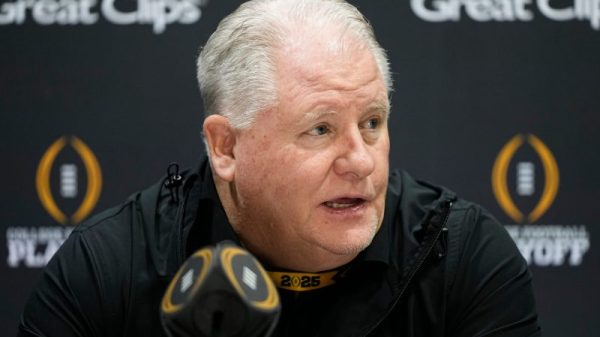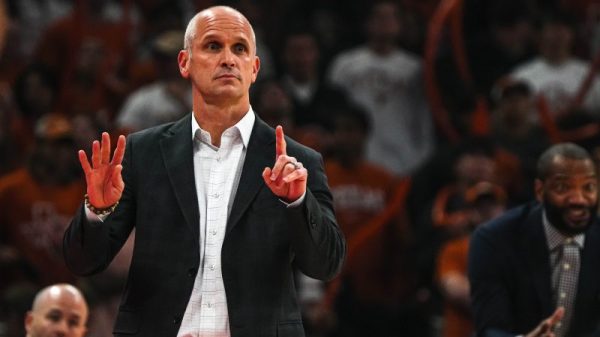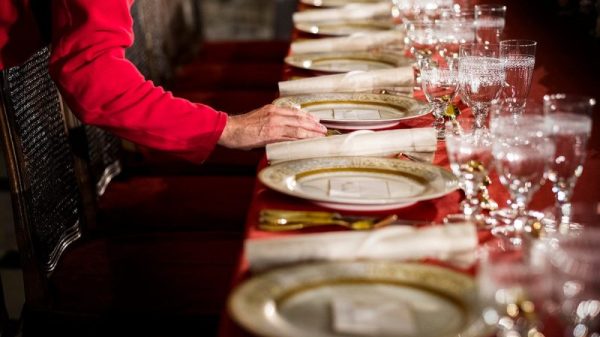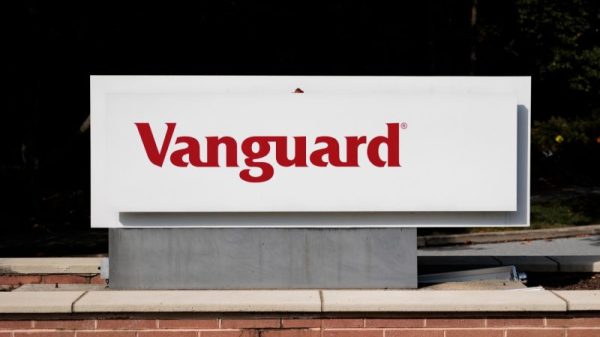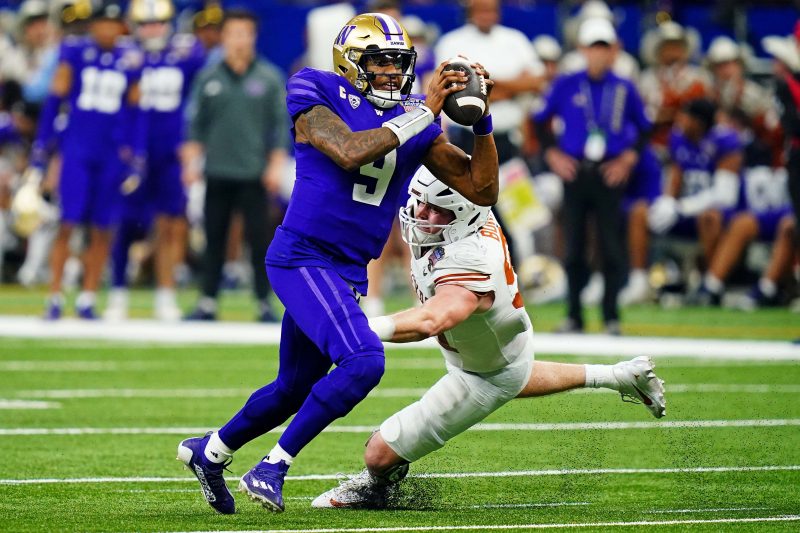
Over a casual dinner earlier this fall where all the topics roiling college sports were batted around, one of the game’s venerable power brokers turned the tables on the person who’s supposed to be asking the questions.
“What would you do with the rest of the college football postseason?” this person asked, sparking a conversation that opened my eyes to an idea I hadn’t previously considered.
For an industry that has gone out of its way over many decades to accommodate the bowl industry, even cutting them in on the spoils of the College Football Playoff, there’s been a disturbance in the force.
Though everyone knew a decade ago that creating the CFP would change the nature of and interest in college football’s larger postseason, the bowls were still considered untouchable. Despite a financial model that ensured most schools lost money on bowls, schools and conferences dutifully participated in them, believing in their necessity as a reward for players, a vehicle for coaches to squeeze in extra practices and a marketing tool for the university.
“But it’s getting to be a tough business,” my dinner companion said with a request for anonymity due to the sensitivity of the subject, noting the increasing number of players opting out of bowls or exiting the program via the transfer portal, leading to decreased enthusiasm from fans. “It’s not sustainable. Is it really a reward when people don’t want to play? The obvious answer might be just don’t do them. I know there’s a lot of tradition there, and I’m a traditional (person). I just don’t see how it’s going to work.”
My jaw was on the floor. Never had I heard someone with so much skin in the game broach the idea of such a radical upheaval in college football’s postseason.
Could you really do away with bowl games completely? What about an NIT-style tournament in December for a group of teams that didn’t make the CFP? What if you took the current bowl games and converted them into exhibitions or scrimmages that took place after spring practice?
POSTSEASON LINEUP: The complete college football bowl schedule
ON THE MOVE: Ranking the top quarterbacks in the transfer portal
These ideas and a bunch more should all be up for discussion, the person said. With the playoff expanded to 12 and perhaps beyond, further diminishing the prestige of non-CFP bowls, status quo simply isn’t the answer.
The conversation over reimagining bowl season took on newfound urgency last weekend when Marshall, the Sun Belt champion, withdrew from its Dec. 28 Independence Bowl matchup against Army citing fewer than 50 players available after head coach Charles Huff left for Southern Mississippi and the portal exodus that occurred as a result.
“At this moment, our football program’s participation numbers create a major concern for the health and safety of our current student athletes to compete in a safe, viable manner,” school officials said in a release.
Though 5-7 Louisiana Tech agreed to take Marshall’s spot, administrators at Army and the American Athletic Conference were incensed. And there’s little doubt that when conference commissioners meet in January before the national championship game, there’s going to be an appetite to discuss how to reform the system.
“Let’s look at the whole thing and just figure out, is there another way? Is there a better way?” said one of them, who spoke on the condition of anonymity because formal talks had not taken place.
The timing is good to think about changes. In 2026, when all the current agreements expire, the College Football Playoff is likely to expand to 14 teams. That will undoubtedly have a downstream impact on the bowls, of which there are currently 35 outside of those tied to the playoff.
The reality check here is bowl season, for all its problems, is inexorably linked to ESPN’s December programming schedule. In fact, ESPN owns and operates 17 of those games itself and has broadcast agreements with nearly all of the others. Good luck convincing college football’s most important business partner that bowl games are no longer worthwhile when they’re filling television windows over the holidays that generate more viewers than the NBA, college basketball or NHL regular season games that would likely take their place.
“I think the changes will need to be below the surface,” said Nick Carparelli, the executive director of Bowl Season, an organization that coordinates various business operations among the bowl operators. “There are solutions to be had. It’s just a matter of people’s willingness to think differently and do what’s in the best interest of the sport versus allowing the status quo, which just simply is not working right now.”
What are those solutions? In Carparelli’s mind, these are potentially items like changing the timing of the transfer portal, tying players’ revenue sharing compensation to postseason participation, bowl payouts fluctuating based on player availability and making it punitive for a school to pull out of a bowl after to agreeing to play. It could also mean creating more flexibility to foster matchups that make more sense rather than the current selection system which is based on a specific conference contractually filling a spot in a specific game.
“People love bowl games and the bowl system,” Carparelli said. “The problem is not with bowl games, it’s with the infrastructure surrounding college football right now that’s negatively impacting the sport at every level.
‘We need to stop making excuses and stop pointing out reasons why we can’t make changes that are good for the sport and take some bold steps to fix it. We’re beyond the point where we can expect to find a square solution that goes into a square hole. We have to make some tough decisions that are in the best interest of the sport, even if they aren’t popular.”
Here’s where it gets sticky, though. Carparelli’s primary job is advocating for the bowls. For decades, that was relatively easy work because the sport’s stakeholders believed the system was worthwhile and made all kinds of concessions to prop it up and expand it. They even made accommodations for six bowl games to be part of the CFP structure when it would probably have been more efficient to cut them out. But nobody wanted to be the bad guy who let the Rose Bowl die on the vine.
Now, the thinking across the industry is a bit different. Athletics directors are facing huge budget pressures at the moment from the House vs. NCAA settlement and athlete revenue sharing provisions that will cost them tens of millions of dollars. Fans are being asked to give, give and give some more to support name, image and likeness efforts.
Is it worth losing money on a bowl game — which, again, most schools do because they are required to buy huge blocks of tickets when they sign the contract to participate — when you’re not part of the playoff, your fans don’t really care and half your starters have opted out?
“We just keep adding bowl games, but we’ve diluted the value of the entire postseason by just adding events,” one person close to the process told USA TODAY Sports on the condition of anonymity, citing the sensitivity of these partnerships. “And the bowls don’t lose money because they’ve passed all the risk on to the schools. We need to generate more value (to keep them viable).”
The push and pull between the bowl system lobbying for NCAA-led changes that lock players into participation and schools/conferences looking for reforms that might decrease the number of bowl games or make the financial arrangements more favorable will be fascinating to watch as 2025 unfolds.
And it’s clear administrators are at least open to a world that looks very different for postseason games outside of the playoff. No longer do the bowls have a vice grip on the hearts and minds of those making the decisions. One way or the other, change is coming.
“Any change requires a little bit of give and take,” Carparelli said. “But there’s a system to be had where nobody’s losing opportunities.”


